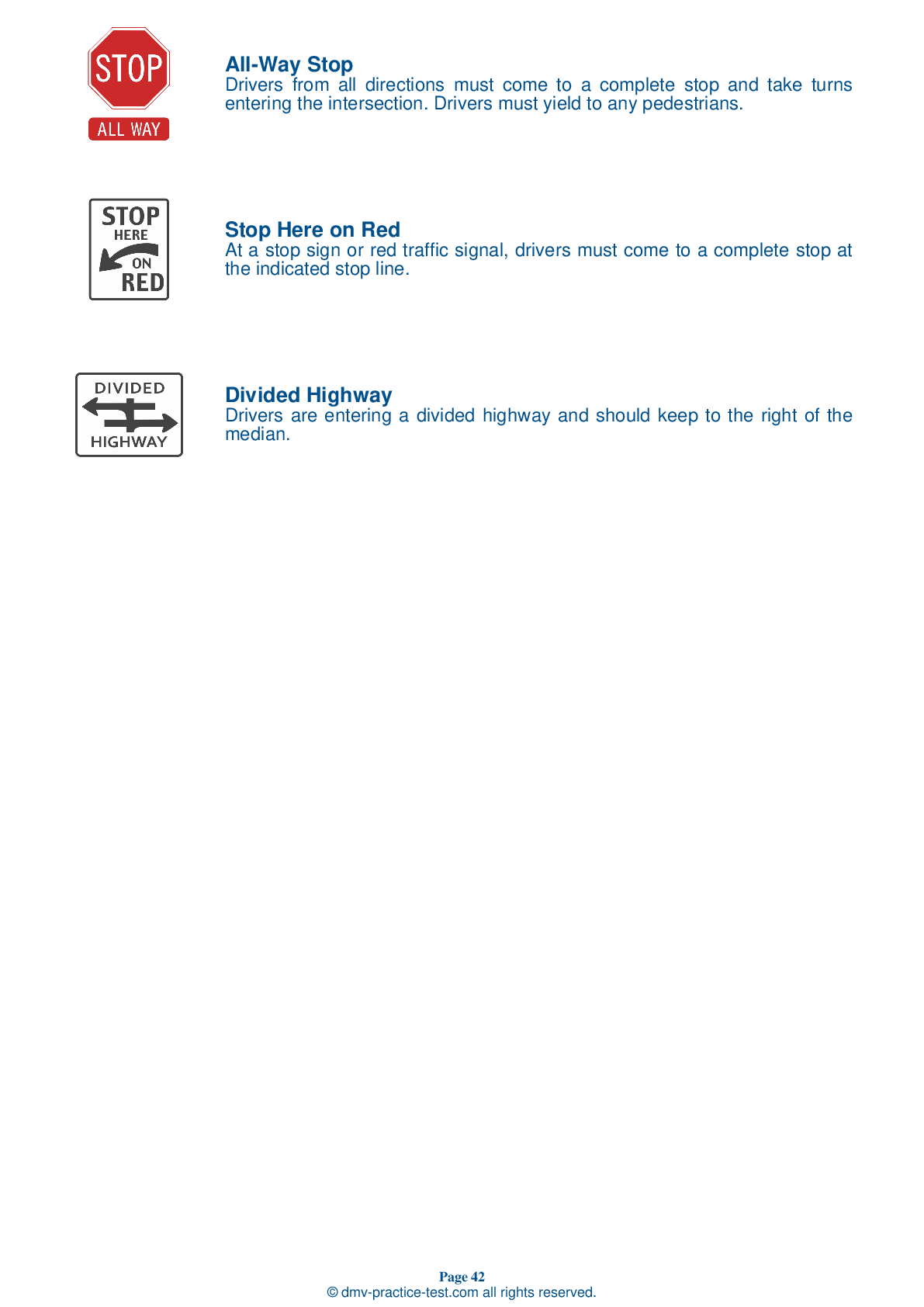FREE California DMV Practice Test #18 Page 7 of 6
This California DMV practice test includes 36 of the most vital road signs and rules questions taken directly from the official California Driver Handbook for 2025. Use genuine questions that are very similar (often identical!) to the DMV driving permit practice test and driver's license exam to prepare for the DMV driving permit test and driver's license exam.
To help you recall the topics, each ca dmv practice test question includes a hint and explanation. The written component of the official DMV test will consist of questions about regulations of the road, traffic signs, and driving statutes, as well as information from the Driver Handbook.
To get the required 83 percent passing score to be allowed to pass, you must correctly answer 38 out of 46 questions (or 30 out of 36 if you are over 18). Use this DMV practice exam to help you prepare for your California instruction permit or driver's license.
How does it work?
California residents using any form of testing help during the test will result in an automatic failure, and the DMV may take further action against your driving permit, so please don't cheat.
Ideally suited for:
- California Driver’s License
- Driver's Learner Permit in California
- CA Refresher Test for Senior Citizens CA
- CA Driver’s License Renewal
What to expect on the CA DMV exam:
- 36 questions
- To pass, you must have 30 accurate answers.
- a passing grade of 83%
- The minimum age to apply;15 ½
37 . This road sign means:

Warning signs provide notice to road users of a situation that might not be readily apparent and are usually yellow with black markings. This sign warns drivers of an upcoming intersection so they may prepare for potential traffic or prepare to turn.
38 . While driving at night, a vehicle coming toward you has its high beams on, making it hard for you to see the road ahead. You should:
If an oncoming driver fails to dim their high beams, you should avoid looking directly at the headlights. Instead, look toward the right edge of your lane and watch the oncoming vehicle out of the corner of your eye.
39 . When a school bus is stopped ahead on your side of the road with its red lights flashing, you must:
The flashing overhead lights and stop arm on a school bus will be activated when the bus is stopped to load or unload students. If approaching a bus using these signals, you may not proceed until the red lights have stopped flashing and the stop arm has been retracted. Never pass a school bus that is dropping off or picking up students.
40 . When parking your vehicle on any hill:
When parking on a hill, you should always leave your vehicle in gear or in the "park" position. If there is no curb, you should turn your front wheels so that the vehicle will roll away from the center of the road if the brakes fail. If there is a curb, the front wheels should be turned toward it (if headed downhill) or away from and gently touching it (if headed uphill).
41 . When changing lanes, you should never:
Before changing lanes, check for drivers trying to pass you who may be trying to enter the same lane as you. Look over your shoulder to check your blind spot. You should never attempt to pass or otherwise change lanes in an intersection.
42 . Double solid yellow lane markings mean that:
Yellow lane markings indicate a separation of lanes where traffic is traveling in opposite directions. When you see double solid yellow lane markings, passing is prohibited from both directions.
43 . Dim your headlights for oncoming vehicles or when you are within 300 feet of a vehicle:
You are required to dim your headlights to low beams within 500 feet of a vehicle that is coming toward you and within 300 feet of a vehicle that you are following.
44 . Which of the following factors affect an individual's absorption of alcohol?
Factors affecting a person's absorption of alcohol include the person's weight, their biological sex, the amount of food in their digestive tract, and the number of alcoholic beverages they have consumed. The only thing to do to remove alcohol from a person's system is to wait.
45 . This sign means:





